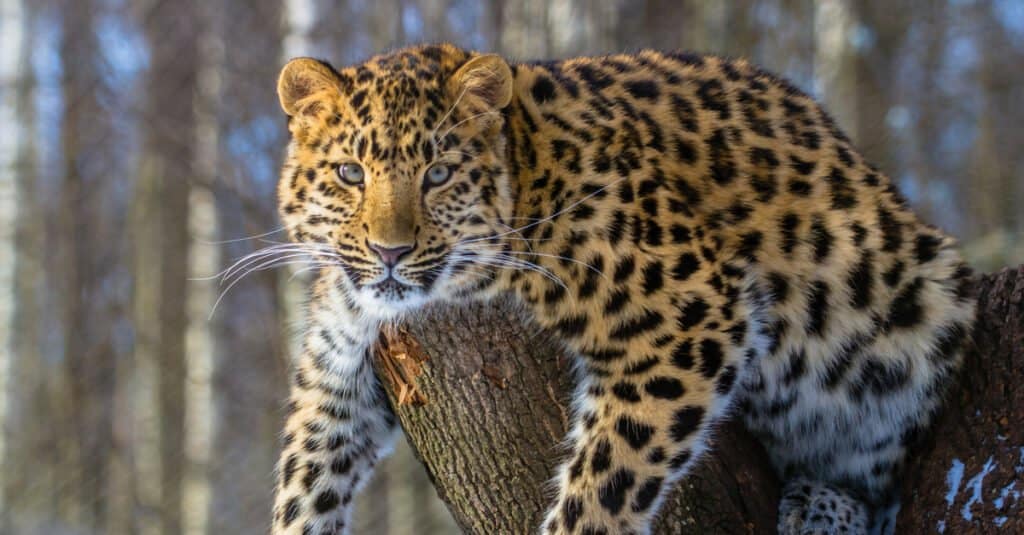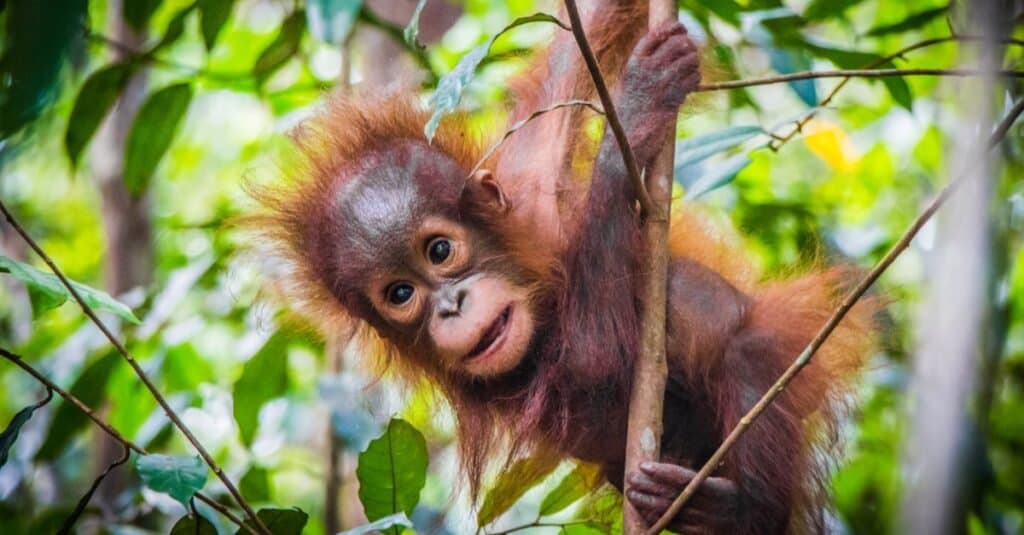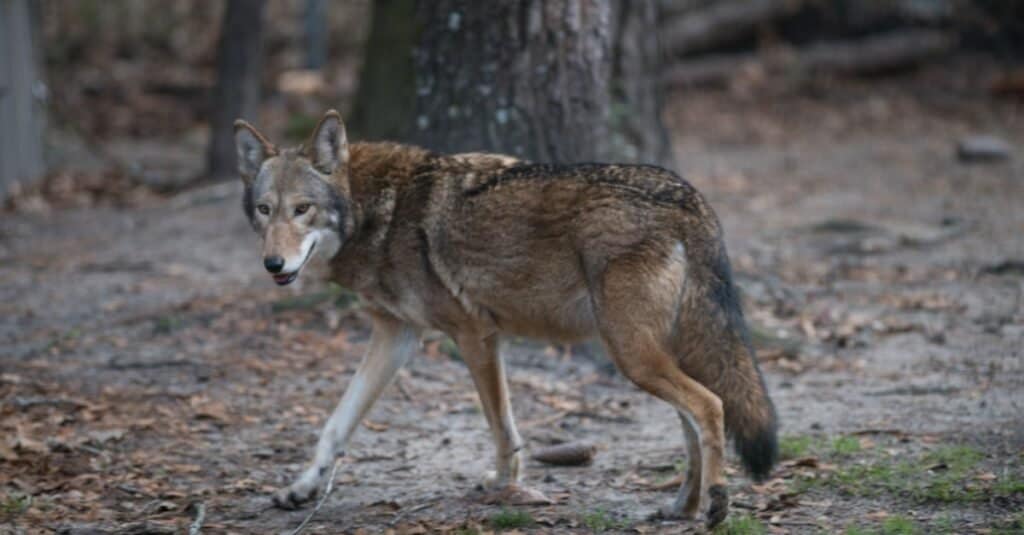Humans are the most capable and advanced species on the planet, so we are ultimately responsible for how we treat it. Unfortunately, we don’t have the best track record for creating healthy and productive global systems.
Still, thankfully, we are starting to realize our responsibility for various issues and working towards fixing them. One of the most notable ecological problems we face is a lack of biodiversity stemming from human action. Essentially, human activities are causing the loss of species in certain parts of the world. Today, we are going to take a look at 10 animals that are rapidly approaching extinction.
Seeing the beauty and rarity of life in these animals is one of the best ways to raise awareness and, hopefully, make a change. Let’s get started.
10 Animals That Are Going Extinct
There are a lot of animals that are approaching extinction, but today, we’ve compiled some of the most notable. Each of the animals is listed as endangered or critically endangered. Let’s look at them, learn about their populations, and discover their rich biological history.
1. Amur Leopards

The Amur
leopard
has been considered one of the rarest cats on earth. In 2007, it was estimated that only 19 to 26 wild leopards were living in southeastern Russia and northeastern China.
©Dmitri Gomon/Shutterstock.com
The Amur leopard is a subspecies native to the Russian Far East. It is known for its ability to adapt to life in the temperate forests of the northernmost part of its range. Unfortunately, this strikingly beautiful animal is close to extinction. The Amur leopard is solitary and an extremely nimble hunter. It’s known to carry and hide unfinished kills to avoid competition from other predators. Some males have been reported to stay with females after mating and even help rear the young. They live for 10-15 years in the wild and up to 20 years in captivity. Unfortunately, the Amur leopard is critically endangered, with a population of around 84 individuals.
2. Sumatran Tiger
The Sumatran tiger is a subspecies of tiger native to the island of Sumatra in Indonesia. It is known for its unique stripes and smaller size than other tigers. The Sumatran tiger is the only remaining tiger subspecies that lives in a primarily tropical environment. They are solitary animals, with males and females only coming together to breed.
The Sumatran tiger population has been drastically declining in recent years due to habitat loss and poaching. The total population is estimated to be around 600 individuals, making it one of the most critically endangered tiger subspecies. The loss of natural habitat due to deforestation for palm oil and paper production is the main threat to their survival. Poaching for body parts, highly valued in traditional Asian medicine, also poses a significant threat. Conservation efforts are underway to protect and increase the population of the Sumatran tiger.
3. Yangtze Finless Porpoise

©Yohkawa/Wikimedia Commons – License
The Yangtze Finless Porpoise is a unique porpoise species found only in the Yangtze River in China. It is the only living freshwater porpoise in the world and is critically endangered. The Yangtze River has been facing severe environmental degradation, overfishing, and water pollution, which has resulted in a drastic decline in the population of the Yangtze Finless Porpoise. Once, the river was home to both Yangtze river dolphins and finless porpoises, but the freshwater dolphins have not been seen for over two decades and are generally considered extinct.
To protect this species, the Chinese government has upgraded the finless porpoise to “first-level protected species” in 2021, which is the highest level of protection available in the country. The population of the Yangtze Finless Porpoise was estimated to be around 1,000 individuals in 2018, and it seems to have stabilized in the wild.
4. Animals Going Extinct: African Forest Elephant
The African forest elephant is a subspecies of the African elephant native to the central and western parts of Africa, specifically the rainforests. It is smaller than its savannah elephant cousin and has straighter, downward-pointing tusks.
The African forest elephant population has been greatly affected by habitat loss and poaching. The illegal ivory trade is a major threat to the survival of this species. The population of African forest elephants has declined by around 86% over the past three decades. The IUCN has listed the African forest elephant as a critically endangered species. The estimated population is around 50,000 individuals, which is around 25% of their historical range. These remaining elephants are split among 20 African nations.
5. Orangutans (Sumatran, Bornean, and Tapanuli)

The main threat to orangutans is the loss or fragmentation of their forest habitat.
©Alex East/Shutterstock.com
Orangutans are a species of great ape found in Indonesia and Malaysia. There are three species of orangutans: the Sumatran orangutan, the Bornean orangutan, and the Tapanuli orangutan. The main threat to orangutans is the loss or fragmentation of their forest habitat. This is caused by logging for timber materials, forest fires and the conversion of their habitat for oil palm plantations. Most estimates say that over 100,000 Bornean orangutans were lost between 1999 and 2015 alone.
Palm oil is an edible vegetable oil that is used in a lot of products. Indonesia and Malaysia are some of the largest oil suppliers, which is why the production in the region threatens the orangutans. Monoculture has an extreme impact on the areas where it is performed, especially in highly biodiverse areas.
6. Animals Going Extinct: Chinese Alligator
The Chinese alligator, also known as the Yangtze alligator, is a critically endangered alligator found in China. It is estimated that there are only around 150 individuals remaining in the wild, making it one of the world’s most endangered reptiles. The Chinese alligator is found in the Yangtze River valley and surrounding areas in the eastern part of China. The main threat to the Chinese alligator is habitat loss and degradation caused by human activities such as urbanization, agriculture, and water pollution.
Interestingly, the Chinese alligator is one of two extant species of alligator, the other being the American alligator. They have been around for millions of years and have been able to survive the ice age. Another interesting fact is that it is a relatively small species of alligator, growing to an average length of around 5-6 feet. Efforts to conserve the Chinese alligator have been ongoing for decades, including captive breeding programs and habitat restoration. Despite these efforts, the Chinese alligator remains critically endangered, and continued conservation efforts are needed to ensure its survival.
7. Mountain Gorillas
Mountain gorillas are a critically endangered subspecies of the eastern gorilla found in the high-altitude forests of the Democratic Republic of Congo, Rwanda, and Uganda. The main threat to mountain gorillas is habitat loss and fragmentation due to human activities such as agriculture, logging, and mining. Additionally, political instability and poverty in the region have led to an increased human settlement near mountain gorilla habitats. However, conservation efforts have led to a promising recovery in mountain gorilla numbers, with over 1,000 individuals in the wild.
Mountain gorillas have complex social structures. They communicate with each other using a variety of vocalizations and gestures.
8. Gharials
The gharial, also known as the gavial, is a critically endangered species of crocodilian found in India, Nepal, and Pakistan. The main threat to the gharial is habitat loss and degradation caused by human activities such as dam building, sand mining, and pollution. The gharial is found primarily in the major rivers of the Indian subcontinent, such as the Ganges, Brahmaputra, and Mahanadi.
Efforts to conserve the gharial have been ongoing for several decades, including captive breeding programs and habitat restoration. Despite these efforts, the gharial remains critically endangered, and continued conservation efforts are needed to ensure its survival. The population has declined significantly; currently, there are around 235 adult individuals in the wild. Currently, the gharial inhabits 2% of its historical range.
9. Animals Going Extinct: Red Wolf

A red wolf on the move at the Sewee Center in South Carolina.
©iStock.com/cmicah
The red wolf, also known as the eastern wolf, is a critically endangered species of wolf found in the southeastern United States. The main threat to the red wolf is habitat loss and fragmentation caused by human activities such as urbanization, agriculture, and hunting. The red wolf is found primarily in the southeastern United States, specifically in the coastal prairies and pine savannas of North Carolina, where the last wild population of red wolves was introduced in the late 1980s.
Efforts to conserve the red wolf have been ongoing for several decades, including captive breeding programs and reintroduction efforts. However, despite these efforts, the red wolf remains critically endangered, with a population of around 30 wild individuals and around 300 in captive breeding programs. The population has declined significantly, and continued conservation efforts are needed to ensure its survival.
10. Vaquita
The vaquita is a critically endangered species of porpoise found in the northern part of the Gulf of California in Mexico. The main threat to the vaquita is accidental entanglement in gillnets used for fishing, particularly for the totoaba fish, which is highly valued in the illegal wildlife trade. The vaquita’s habitat is also threatened by pollution, coastal development, and other human activities.
One interesting fact about the vaquita is that it is the smallest cetacean (whale, dolphin, porpoise) species and the rarest marine mammal species in the world. Another interesting fact is that the vaquita is a very elusive animal and is very difficult to spot in the wild, making its population monitoring a challenge.
Efforts to conserve the vaquita have been ongoing for several decades, including creating a protected area, suspending gillnet fishing in the region, and implementing an emergency conservation plan. Despite these efforts, the vaquita remains critically endangered, with a population of around 30 individuals in the wild. The population has declined significantly, and continued conservation efforts are needed to ensure its survival, such as implementing effective enforcement measures to prevent illegal fishing and the development of alternative fishing gear that does not harm the vaquita.
Conclusion
As individuals, we can make a difference in wildlife conservation by taking small actions in our daily lives. We can support conservation organizations and charities and be conscious of the products we buy. In addition, we can support conservation policies and spread awareness about endangered species.
By making sustainable choices, we can reduce the demand for products that harm wildlife and the environment. Also, by educating ourselves about conservation policies and laws, we can make our voices heard to support conservation-friendly policies.
Lastly, sharing information and photos of endangered species with friends and family is an easy way to raise awareness about conservation efforts. Every little bit counts, and together, we can make a big impact on the animals that share this planet with us.
Up Next:
- Different Types Of Extinct Animals
- 14 Extinct Animals: Past and Present
- The 9 Coolest Extinct Animals to Ever Walk the Earth
The photo featured at the top of this post is © iStock.com/AlanJeffery
Thank you for reading! Have some feedback for us? Contact the AZ Animals editorial team.






